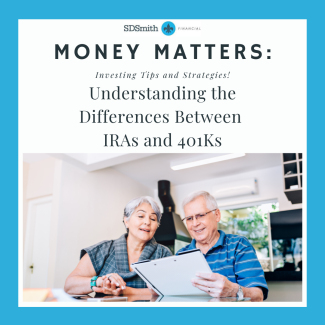
Understanding the Differences of IRAs and 401Ks
Retirement planning can be daunting, but taking a few early steps can yield significant dividends down the line. One crucial step is understanding the similarities and differences between an Individual Retirement Account (IRA) and an employer-sponsored plan like a 401K. For simplicity, we'll focus on the 401K in this discussion. We won’t dive too deeply into the tax implications of Roth and Traditional accounts, but you can learn more about that in this article.
Similarities Between IRAs and 401Ks
Both IRAs and 401Ks offer tax-qualified accounts and investment options. Additionally, when you change jobs or retire, you can roll over your 401K into an IRA. If you have a Roth 401K, it can be rolled into a Roth IRA. The similarities end here, as the key differences are what you need to consider for maximizing your retirement savings.
Key Differences Between IRAs and 401Ks
-
Contribution Limits:
- IRA: For 2024, you can contribute up to $7,000 to an IRA, with a catch-up contribution of $1,000 if you're over 50. This $7,000 limit applies whether you split it between a Roth IRA and a Traditional IRA.
- 401K: The contribution limit is significantly higher at $69,000 for 2024, including employee and employer contributions. Those over 50 can add a catch-up contribution of $7,500. Contributions can be divided among Traditional, Roth, and after-tax accounts, with a maximum of $23,000 in each.
-
Company Match:
- Many employers offer a company match for 401K contributions, usually placed in the Traditional portion of the account. This match boosts your savings and is a significant advantage of 401Ks over IRAs.
-
Income Limits:
- Roth IRA: Contributions are subject to income limits—$230,000 for married couples and $146,000 for single filers, based on Modified Adjusted Gross Income.
- Roth 401K: No income limits apply, allowing higher earners to contribute without restrictions.
-
Investment Options:
- 401K: Investment choices are typically limited to the plan's offerings, which may include target date funds, index funds, and sector funds.
- IRA: Offers a broader range of investment options, including stocks, bonds, mutual funds, ETFs, and alternative investments. This flexibility is a significant advantage for those seeking diverse investment opportunities.
-
Contribution Deadlines:
- 401K: Contributions must be made within the calendar year to receive tax benefits.
- IRA: Contributions can be made up until tax day the following year, providing additional flexibility.
-
The After-Tax Account:
- One of the lesser-known features of a 401K is the after-tax account, which can be a powerful wealth accelerator. While IRAs do not have an after-tax account, the contributions in a 401K’s after-tax account can be converted to a Roth account, and any growth can be converted to a Traditional account. This strategy can significantly boost your retirement savings.
Example Scenario: Let's say your company matches 6% of your $200,000 salary. You contribute $23,000 to the Roth portion, and your employer matches $12,000 in the Traditional portion. You add another $11,000 to the Traditional portion, maxing out both the Traditional and Roth portions. The after-tax account allows for an additional $23,000 in contributions, which can be converted to a Roth account yearly. If you contribute $6,000 to the after-tax portion and it grows to $7,000, you would convert $6,000 to the Roth and $1,000 to the Traditional account, leading to a total contribution of $29,000 to Roth and $24,000 to Traditional.
Understanding these key differences can help you maximize your retirement savings and make informed decisions about your financial future.
If you want to dive deeper into how to utilize your 401K, join my upcoming webinar, “Maximize Your 401K,” on August 28th.

